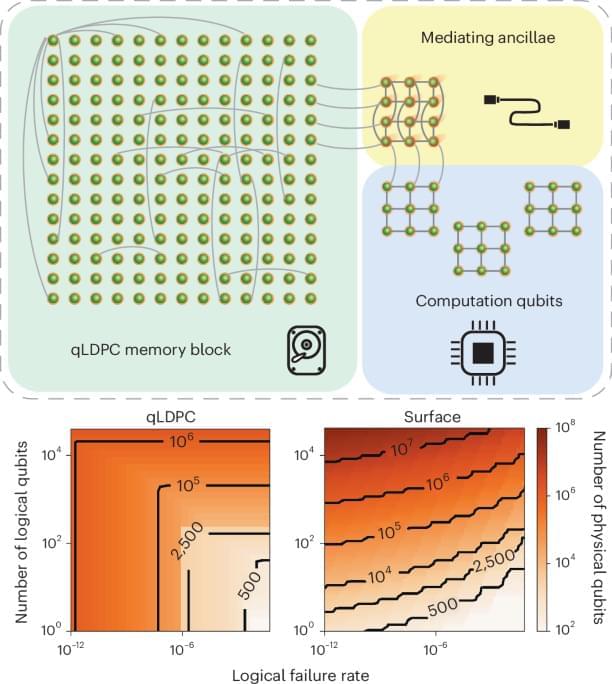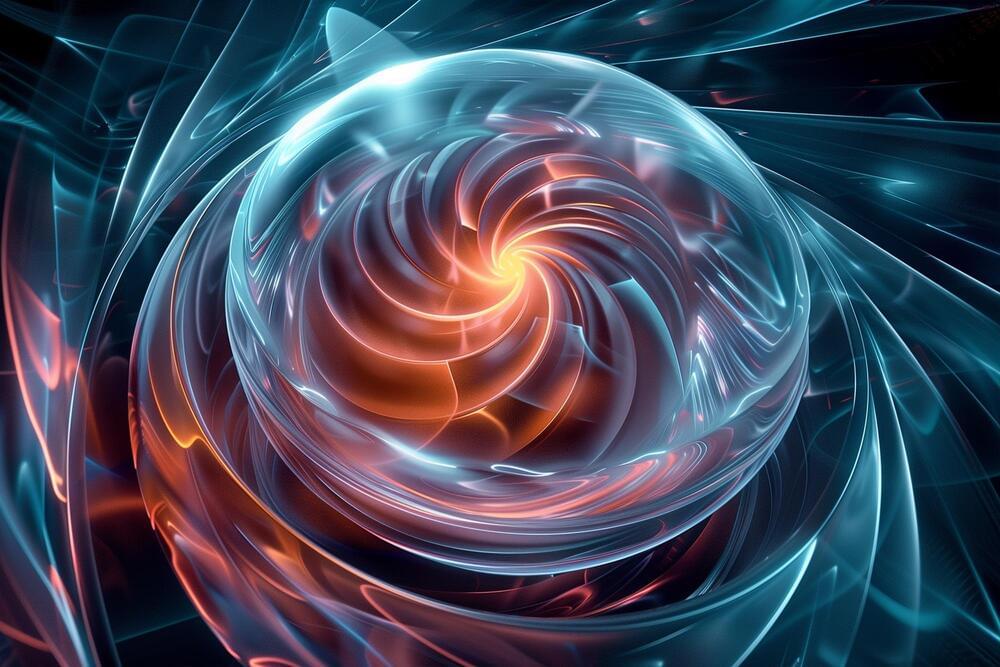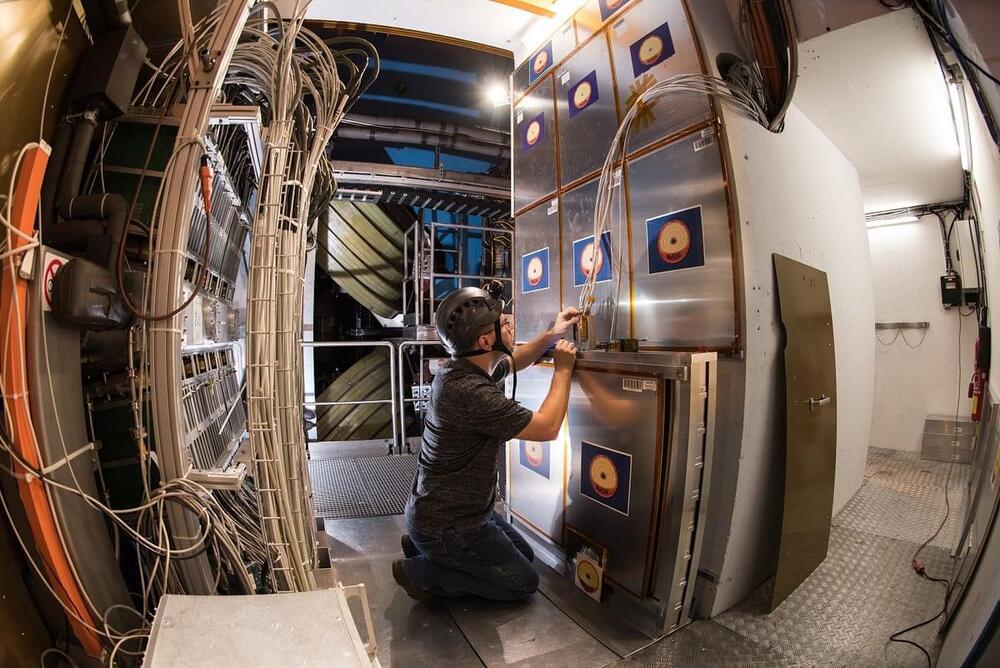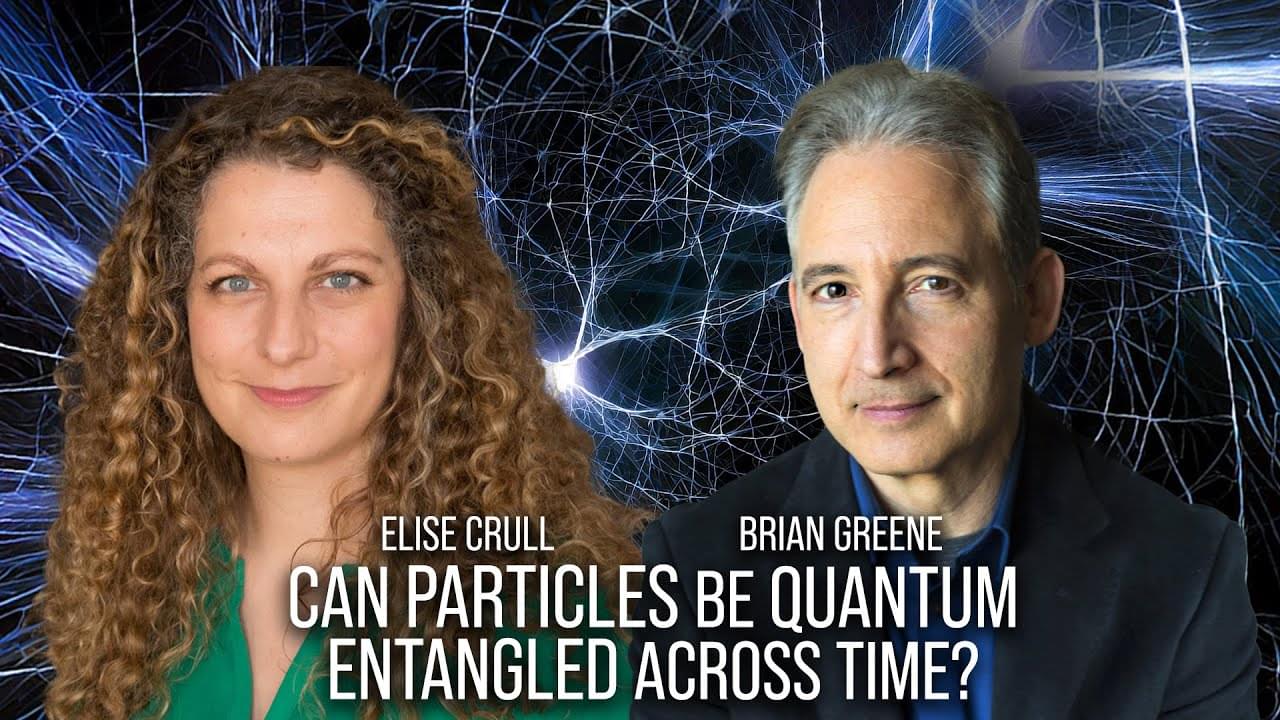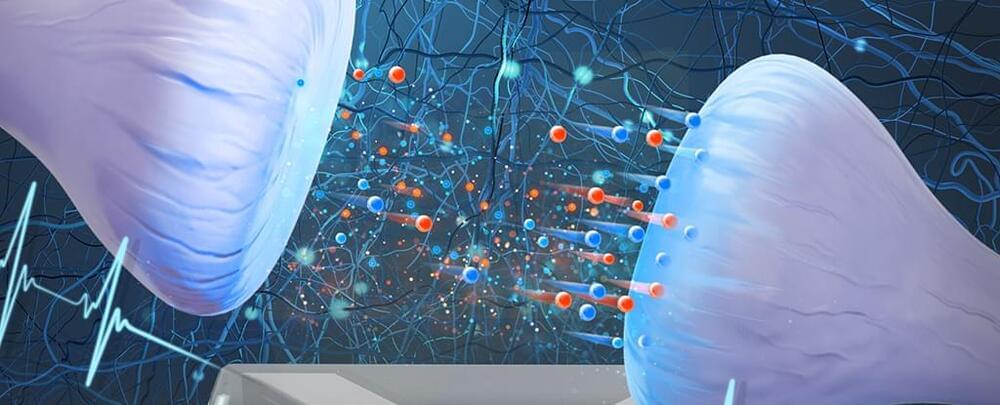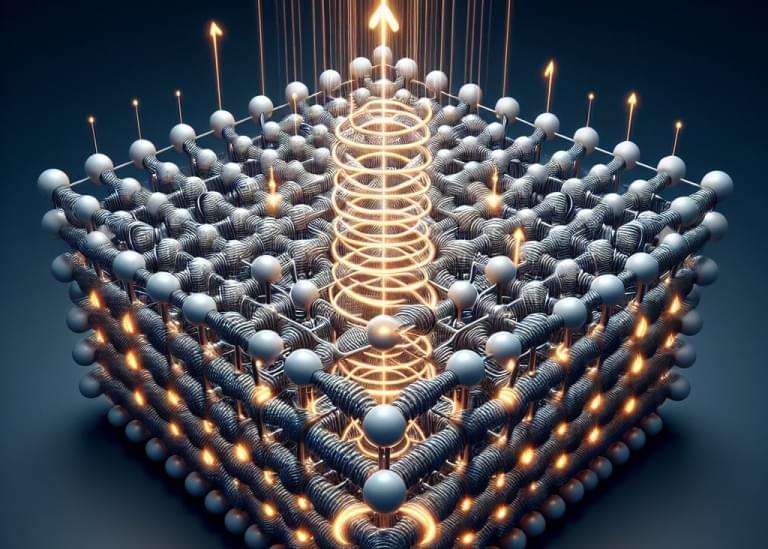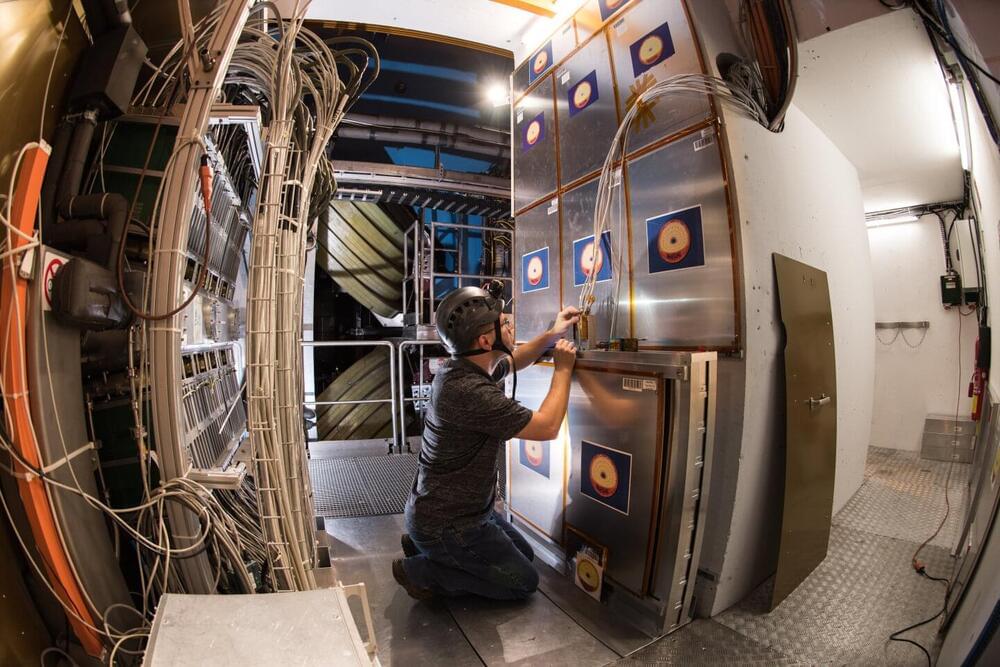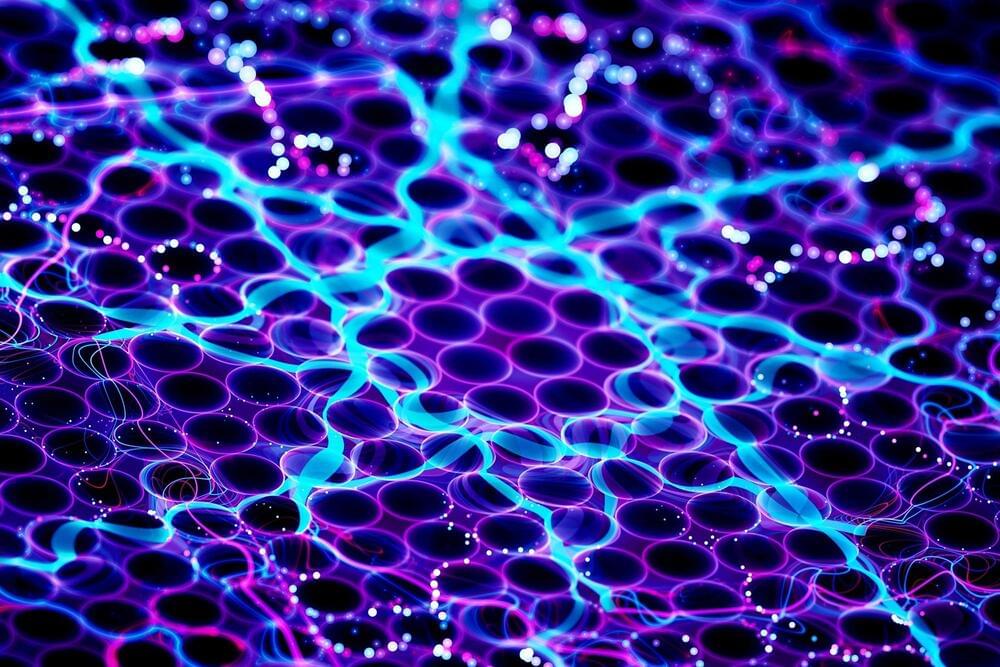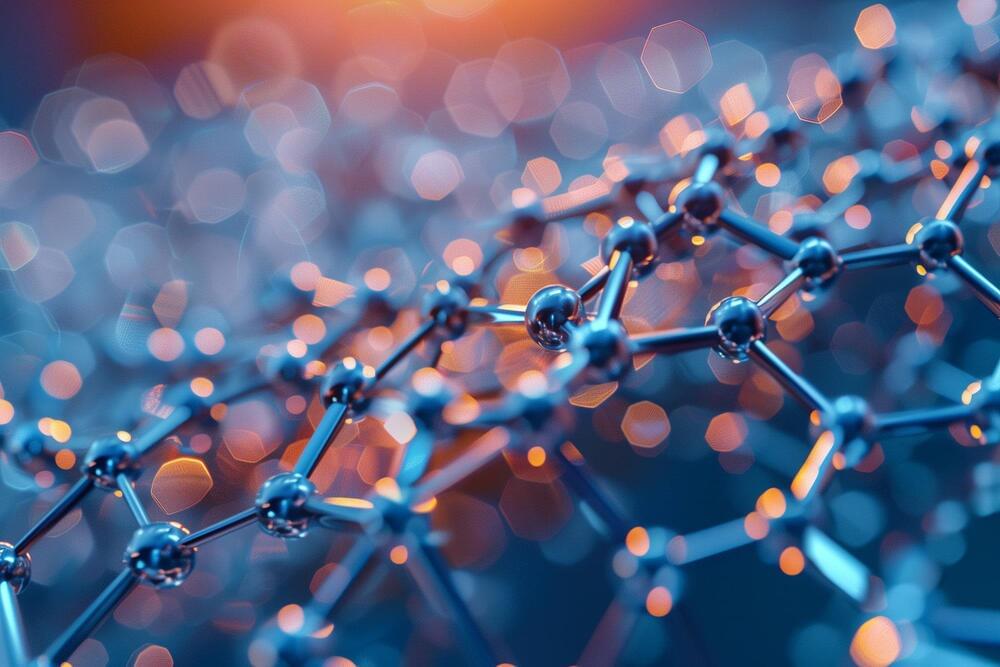Quantum low-density parity-check codes are highly efficient in principle but challenging to implement in practice. This proposal shows that these codes could be implemented in the near term using recently demonstrated neutral-atom arrays.
Category: particle physics – Page 101
A team at HZB has investigated a new, simple method at BESSY II that can be used to create stable radial magnetic vortices in magnetic thin films.
In some materials, spins form complex magnetic structures within the nanometre and micrometer scale in which the magnetization direction twists and curls along specific directions. Examples of such structures are magnetic bubbles, skyrmions, and magnetic vortices.
Spintronics aims to make use of such tiny magnetic structures to store data or perform logic operations with very low power consumption, compared to today’s dominant microelectronic components. However, the generation and stabilization of most of these magnetic textures is restricted to a few materials and achievable under very specific conditions (temperature, magnetic field…).
The elegant equations of classical electromagnetism written by James Clark Maxwell in 1861 display a remarkable symmetry between electric and magnetic fields except for their sources. We know about electric charges but we have not found magnetic charges. Bar magnets are dipoles with two poles, north and south, for the magnetic field, resembling the configuration of an electric field sourced by a pair of positive and negative electric charges. However, we had never seen experimental evidence for a magnetic monopole, namely a magnetic charge with only one magnetic pole, a net north or south, from where magnetic field lines emanate, just like the electric field sourced by an electric charge. In a symmetric theory of electromagnetism, magnetic monopoles should exist.
The existence of monopoles with a net magnetic charge was proposed by Paul Dirac in 1931 to explain the quantized (discrete) values of electric charges. Dirac found that magnetic charges should be an integer multiple of a fundamental unit, g_D, equal to the electron charge, e, divided by twice the fine-structure constant, or about 68.5e.
In classical physics, the existence of magnetic monopoles restores symmetry to Maxwell’s equations. But in the broader context of quantum mechanics, Gerard ‘t Hooft and Alexander Polyakov showed in 1974 that magnetic monopoles are required in Grand Unified Theories of the strong, weak and electromagnetic interactions. Since the electric charge is quantized, magnetic charges are unavoidable in these theories. Magnetic charges with the lowest mass must be stable because magnetic charge is conserved and they cannot decay into lower-mass particles.
1,769 views • Premiered 82 minutes ago • #worldsciencefestival #quantumentanglement #briangreene
For the first time, researchers have simulated neurological junctions called synapses using the same water and salt ingredients the brain uses, contributing to an emerging field that combines biology with electronics called iontronics.
The team from Utrecht University in the Netherlands and Sogang University in South Korea claim to have been inspired by the functioning of the human brain, which also uses charged particles called ions dissolved in water to transmit signals within neurons.
An important feature of the brain’s ability to process information is synaptic plasticity, which allows neurons to adjust the strength of connections between them in response to input history.
The potential of quantum technology is huge but is today largely limited to the extremely cold environments of laboratories. Now, researchers at Stockholm University, at the Nordic Institute for Theoretical Physics and at the Ca’ Foscari University of Venice have succeeded in demonstrating for the very first time how laser light can induce quantum behavior at room temperature — and make non-magnetic materials magnetic. The breakthrough is expected to pave the way for faster and more energy-efficient computers, information transfer and data storage.
Within a few decades, the advancement of quantum technology is expected to revolutionize several of society’s most important areas and pave the way for completely new technological possibilities in communication and energy.
Of particular interest for researchers in the field are the peculiar and bizarre properties of quantum particles — which deviate completely from the laws of classical physics and can make materials magnetic or superconducting.
The late physicist Joseph Polchinski once said the existence of magnetic monopoles is “one of the safest bets that one can make about physics not yet seen.” In its quest for these particles, which have a magnetic charge and are predicted by several theories that extend the Standard Model, the MoEDAL collaboration at the Large Hadron Collider (LHC) has not yet proven Polchinski right, but its latest findings mark a significant stride forward.
The results, reported in two papers posted on the arXiv preprint server, considerably narrow the search window for these hypothetical particles.
At the LHC, pairs of magnetic monopoles could be produced in interactions between protons or heavy ions. In collisions between protons, they could be formed from a single virtual photon (the Drell–Yan mechanism) or the fusion of two virtual photons (the photon-fusion mechanism). Pairs of magnetic monopoles could also be produced from the vacuum in the enormous magnetic fields created in near-miss heavy-ion collisions, through a process called the Schwinger mechanism.
Materials that are incredibly thin, only a few atoms thick, exhibit unique properties that make them appealing for energy storage, catalysis, and water purification. Researchers at Linköping University, Sweden, have now developed a method that enables the synthesis of hundreds of new 2D materials. Their study has been published in the journal Science.
Since the discovery of graphene, the field of research in extremely thin materials, so-called 2D materials, has increased exponentially. The reason is that 2D materials have a large surface area in relation to their volume or weight. This gives rise to a range of physical phenomena and distinctive properties, such as good conductivity, high strength or heat resistance, making 2D materials of interest both within fundamental research and applications.
Peptides can form on cosmic dust despite water presence, challenging previous beliefs and suggesting a possible extraterrestrial origin for life’s building blocks.
Peptides are organic compounds that play a crucial role in many biological processes, for example, as enzymes. A research team led by Dr. Serge Krasnokutski from the Astrophysics Laboratory at the Max Planck Institute for Astronomy at the University of Jena had already demonstrated that simple peptides can form on cosmic dust particles. However, it was previously assumed that this would not be possible if molecular ice, which covers the dust particle, contains water – which is usually the case.
Now, the team, in collaboration with the University of Poitiers, France, has discovered that the presence of water molecules is not a major obstacle for the formation of peptides on such dust particles. The researchers report on their findings in the journal Science Advances.
It is a common hack to stretch a balloon out to make it easier to inflate. When the balloon stretches, the width crosswise shrinks to the size of a string. Noah Stocek, a PhD student collaborating with Western University physicist Giovanni Fanchini, has developed a new nanomaterial that demonstrates the opposite of this phenomenon.
Working at Interface Science Western, home of the Tandetron Accelerator Facility, Stocek, and Fanchini formulated two-dimensional nanosheets of tungsten semi-carbide (or W2C, a chemical compound containing equal parts of tungsten and carbon atoms) which when stretched in one direction, expand perpendicular to the applied force. This structural design is known as auxetics.
